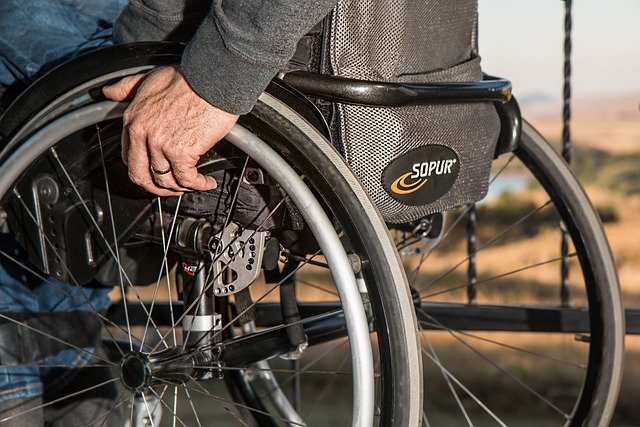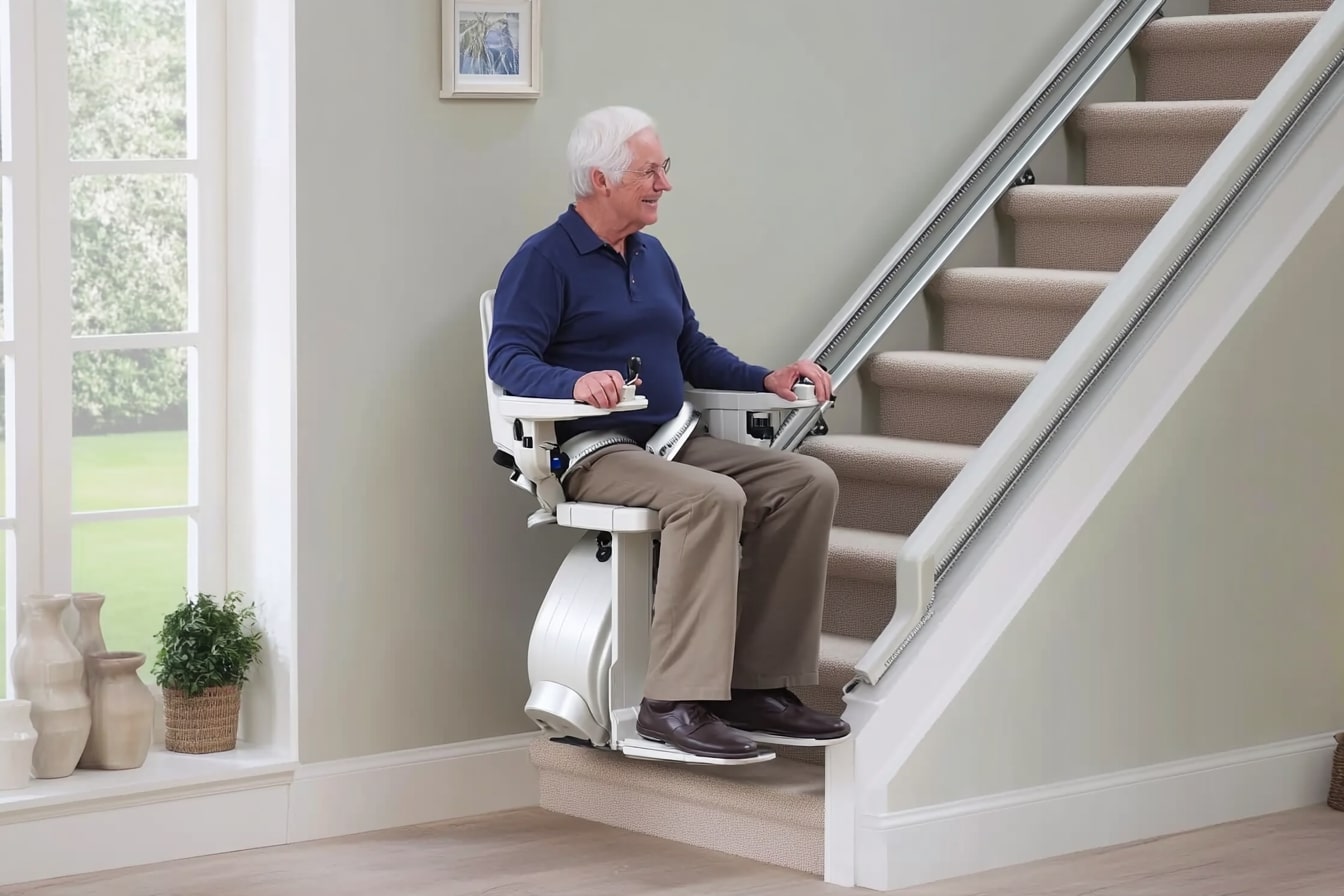New Portable Stair Lift Requires No Installation - A 2025 Guide to Affordable, Easy Setup Solutions
Discover a portable stair lift that requires no permanent installation and provides quick mobility support when you need it most. Lightweight and compact for storage, it can be used for temporary access, short-term rehabilitation, or emergency assistance. Easy to operate and transport, it helps caregivers move people up and down stairs safely without costly home alterations or professional installation.

Portable stair lifts represent a significant advancement in home mobility solutions, offering a practical alternative to permanent stair lifts without the need for complex installation procedures. These innovative devices provide independence and accessibility for individuals with mobility challenges while preserving the aesthetic and structural integrity of their homes. As we move into 2025, the technology behind these portable solutions has evolved considerably, making them more affordable, user-friendly, and adaptable to various stair configurations. This guide explores the latest portable stair lift options, their features, functionality, and how they can benefit users seeking a non-permanent mobility solution.
Features of This Portable Stair Lift
The 2025 lineup of portable stair lifts comes with remarkable advancements designed to enhance user experience and safety. Most models now feature lightweight yet durable aluminum construction, typically weighing between 15-25 kg, making them manageable for transport between locations. Battery technology has significantly improved, with many units offering up to 30 flights of stairs on a single charge—a substantial increase from previous generations.
Safety features have been prioritized in the latest designs, incorporating anti-slip surfaces, emergency stop buttons, and obstacle detection sensors that automatically halt operation when encountering an obstruction. Many models now include foldable seats and footrests that can be tucked away when not in use, minimizing the space occupied on the staircase. Digital displays showing battery life, speed settings, and operational status have become standard, providing users with clear information during use.
How the Portable Stair Lift Functions
Unlike traditional stair lifts that require track installation along the staircase, portable models operate on a fundamentally different principle. Most utilize a motorized platform or chair that climbs stairs through a combination of wheels, tracks, and stabilizing mechanisms. The user or caregiver positions the device at the bottom of the stairs, secures it in place, and then either sits on the chair or stands on the platform depending on the model type.
The operation is typically controlled through a simple interface—either buttons on the device itself or a remote control that allows caregivers to assist if needed. Advanced models now incorporate smart technology, enabling operation through smartphone applications that can also monitor usage patterns and battery status. The climbing mechanism employs powerful motors with precise torque control, ensuring smooth movement between steps regardless of the user’s weight (most models accommodate up to 120-150 kg). When reaching the top of the stairs, the device automatically levels itself to allow safe disembarkation before being ready for downward travel or storage.
Intended Use and Suitable Scenarios
Portable stair lifts are ideally suited for various scenarios where permanent installation is impractical or unnecessary. They excel in temporary living situations such as rental properties where structural modifications are prohibited or limited by landlord agreements. These devices are particularly valuable for individuals recovering from surgery or temporary mobility impairments who need short-term solutions without committing to permanent home modifications.
Many families find portable stair lifts beneficial when caring for elderly relatives who visit occasionally but struggle with stairs. The ability to store these devices when not in use makes them practical for homes with limited space or where aesthetic considerations are important. Additionally, portable stair lifts serve as excellent backup solutions during power outages (as they rely on battery power) or when permanent lifts require maintenance. Some models are even designed for outdoor use, providing access to garden levels or entrances with a few steps that might otherwise become inaccessible.
Who May Benefit from This Portable Stair Lift?
The primary beneficiaries of portable stair lifts include elderly individuals who maintain relative independence but struggle with stair climbing due to reduced strength, balance issues, or joint pain. These devices provide crucial mobility support while allowing seniors to remain in multi-level homes rather than relocating to single-level accommodations.
Persons with disabilities or chronic conditions affecting mobility—such as arthritis, multiple sclerosis, or partial paralysis—often find these devices essential for maintaining access to all areas of their homes. Rehabilitation patients recovering from knee or hip surgery, stroke, or other procedures requiring limited stair use can utilize portable stair lifts during their recovery period. Caregivers also benefit significantly, as these devices reduce the physical strain and injury risk associated with assisting individuals on stairs. Even families with temporary needs, such as accommodating relatives with mobility issues during visits, find portable stair lifts to be practical solutions that can be deployed when needed and stored when not in use.
Pricing and Availability in 2025
The portable stair lift market has expanded considerably in 2025, with more manufacturers entering the space and creating healthy competition that benefits consumers through improved pricing and options. Entry-level models typically range from £1,200 to £2,500, while mid-range options with additional features generally cost between £2,500 and £4,000. Premium models with advanced technology and capabilities can reach £4,000 to £6,500.
| Model | Weight Capacity | Battery Life | Key Features | Price Range |
|---|---|---|---|---|
| MobilLift Compact | 120 kg | 20 flights | Foldable design, basic display | £1,200-£1,800 |
| StairGlide Pro | 150 kg | 30 flights | Smart app control, obstacle detection | £2,800-£3,500 |
| Freedom Climber | 180 kg | 40 flights | All-terrain wheels, outdoor capability | £3,800-£4,500 |
| AccessPlus Elite | 200 kg | 35 flights | Voice control, remote diagnostics | £4,500-£6,000 |
Prices, rates, or cost estimates mentioned in this article are based on the latest available information but may change over time. Independent research is advised before making financial decisions.
Availability has improved significantly compared to previous years, with most models available through mobility specialists, medical equipment providers, and online retailers. Many companies now offer rental options ranging from £100-£300 per month for those requiring temporary solutions. Additionally, some health insurance providers and government assistance programs have begun including partial coverage for these devices when prescribed by healthcare professionals, though eligibility criteria vary considerably.
The portable stair lift market continues to evolve rapidly, with new innovations emerging regularly. As battery technology improves and manufacturing processes become more efficient, we can expect further price reductions and feature enhancements in coming years. For those considering a purchase, comparing multiple providers and exploring rental options before committing can help ensure the most suitable and cost-effective solution for individual needs.




